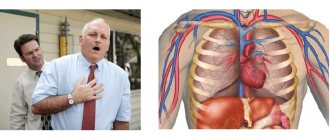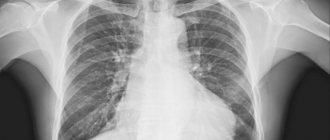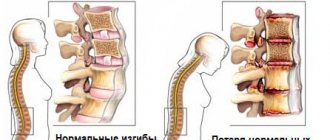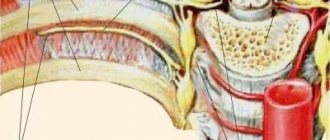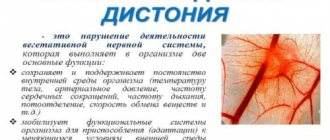In recent years, cephalalgia has become a common pathology, affecting not only patients in the older age group, but even children and adolescents. Vascular headache is diagnosed in a third of the population and has various triggering factors. At its first manifestations, it is recommended to undergo a thorough examination, since this condition may indicate the development of serious diseases in the body, which, if treatment is refused, can lead to death. The therapy will be comprehensive and to obtain a positive result, you should follow the specialist’s recommendations and carry out preventive measures.
Clinical picture
With vascular diseases, patients not only complain of pain in the head, but also other symptoms that accompany this disease. Cephalgia can be of varying intensity and localized in different parts of the head, which helps in making a diagnosis. Very often, vascular headache is accompanied by pulsation, which causes considerable discomfort to the patient and worsens his quality of life.
If cephalalgia is intense, the patient may complain of nausea, general weakness, malaise and problems with appetite. Also, in parallel, other symptoms arise, indicating the development of serious diseases in the body. In this case, urgent examination and high-quality treatment are required.
The pain can occur at any time of the day and last for a long time. If the provoking factor is not clearly established, then taking various medications for cephalalgia will not give a positive result. Uncontrolled use of medications can only worsen the condition and harm the functionality of the gastrointestinal tract, liver, kidneys and pancreas.
How to distinguish headaches from VSD?
Headache with VSD is characterized by a number of characteristic symptoms:
- As a rule, it appears in the morning (or afternoon) hours and can continue throughout the day. It gets quiet at night.
- Most often of weak or moderate intensity, not acute in nature.
- Its attacks can be short-term or long-lasting (up to several hours or even days).
- May be accompanied by general weakness, pressure in the eyes, discomfort in the neck, dizziness, ringing in the ears, spots in the eyes, loss of consciousness.
- It may be accompanied by some mental manifestations: anxiety, apathy, a feeling of derealization.
- When bending the body, it often intensifies or is accompanied by pulsation in the temples.
- Has different localization. Covers the entire head or some parts of it (usually the occipital or temporal region).
- Has difficulty responding to painkillers.
- Sometimes manifestations from the vascular system are added: nasal congestion, dilation of fundus veins, changes in blood pressure, swelling of the lower eyelids.
Possible reasons
It is possible to determine the provoking factor of a vascular headache only after a medical examination, so you should not engage in self-diagnosis in order to exclude negative consequences. In most cases, cephalalgia occurs due to viral infections, influenza or respiratory colds. In this case, eliminating the disease is not difficult.
Other reasons may also be sources:
- constant reaction of the body to changes in weather;
- disrupted rest and work schedule;
- insomnia;
- constant stressful situations;
- poor nutrition, disrupted eating patterns;
- prolonged exposure to an environment with high air temperature and humidity;
- hypothermia;
- excessive physical activity;
- smoking or alcoholism.
Provocateurs of vascular headaches include such equally important deviations as oxygen starvation of the brain, its cells, and diseases of the cervical spine. In this case, cephalalgia is a symptom of the underlying illness occurring in the body. By eliminating the cause of the malaise, you can get rid of the general problem.
Below we will present more serious diseases that can provoke intense headaches of the vascular type.
Diagnostic methods
Transcranial ultrasound of cerebral vessels
Therapy is carried out by neurologists or cardiologists, depending on what caused the discomfort. Endocrinologists and a therapist are also involved for general monitoring of the condition. In severe cases, consultations with specialized surgeons are required.
To confirm the primary diagnosis after examination, the following is prescribed:
- laboratory tests;
- Ultrasound of the vessels of the neck and brain;
- ECG and monitoring;
- CT and MRI of the brain for focal manifestations of symptoms;
- examination of the fundus vessels;
- rheoencephalography and EEG;
- angiography if it is impossible to make a diagnosis using ultrasound and tomograms.
Sometimes an ultrasound of the adrenal glands and kidneys is required, blood is donated for hormones and a coagulogram is examined.
Cephalgia with hypertension
Hypertension is a disorder in the circulatory system, which is accompanied by headache and refers to secondary hypertension. With this condition, the patient experiences increased blood pressure, leading to significant changes in the blood vessels. There is a decrease in their functionality, which is why disorders associated with blood circulation occur in the cranial region.
The intensity of headaches in vascular diseases depends on the tone of the arteries. In hypertension, a local narrowing of the lumen between them is diagnosed, which leads to tortuosity of the bloodstream. This is due to the compaction of the vascular walls. This condition is characterized by a persistent increase in blood pressure. As a result, the patient constantly suffers from vascular dystonia and headaches. The disease can be eliminated only by curing the underlying disease and taking preventive measures that can generally improve the patient’s condition and the functionality of internal systems.
What tests are usually prescribed?
At an appointment with a neurologist, a physical examination of the patient is performed: basic neurological reflexes are checked and the neck muscles are examined.
The doctor writes out a referral for tests: general blood test, biochemical blood test, blood sugar test.
A general blood test with an increase in ESR or an increased content of leukocytes indicates inflammation in the body.
Blood biochemistry may indicate a deficiency of one of the vital elements, which leads to discomfort in the head area.
Low blood glucose levels are often accompanied by cephalgia, dizziness and weakness.
The doctor may write a referral for additional tests:
- The gas composition of arterial blood can reveal cerebral hypoxia.
- A blood test for hormones determines various abnormalities in the functioning of the hypothalamus.
A neurologist can give a referral to one or more diagnostic methods:
- Magnetic resonance imaging (MRI) - excludes the presence of various neoplasms (tumors and cysts), aneurysms. The photographs clearly show post-traumatic defects, neurodegenerative abnormalities, and changes in blood vessels affected by atherosclerosis.
- Computed tomography (CT) is the most informative method for studying the brain. It gives a clear idea of pathological changes in the skull and brain, pathology of bone tissue, blood vessels and brain structures. Provides information about the consequences of traumatic brain injuries. The disadvantage of this method is the significant radiation dose during the study.
- Electroencephalography gives an idea of the presence of pathological changes in blood vessels and impaired cerebral circulation.
- Doppler ultrasound (ultrasound of the head and neck) - shows the presence of atherosclerotic plaques in the arteries; narrowing and tortuosity of the arteries, leading to brain hypoxia; peripheral vascular resistance.
- Rheoencephalography (REG) - gives an idea of the tone and blood flow of blood vessels. Using REG, the following are diagnosed: hypertension, atherosclerosis, vegetative-vascular dystonia.
- MRI of the cervical spine - the presence of cervical osteochondrosis can cause pain in the head and neck, which intensifies when turning the head.
- Rheovasography of cerebral vessels (RVG) - shows the quality of blood flow through the great vessels, evaluates collateral circulation.
- Radiography will be less known. In the image you can only see the bone structures of the skull, soft tissues are not visible.
There is no need to panic when scheduling such a serious examination. The doctor excludes rare severe pathologies and looks for the causes of the pain process.
Based on the studies, if no serious organic lesions are found, the cause of the disease is usually diagnosed. It develops as a result of: vascular spasms, cerebral hypoxia, hypertonicity of cerebral vessels, hormonal imbalances, vegetative-vascular dystonia or osteochondrosis, provoked by physical or psycho-emotional stress.
Hypotonia and cephalgia
Another provoking factor for headaches is hypotension. This disease is characterized by low blood pressure. In this case, the patient complains of dull, constricting and pulsating type cephalgia. If an advanced stage of hypotension is diagnosed, then there is a violation in the permeability of the arterial walls, as a result, perivascular edema develops and the pain acquires an acute vibrating character.
Cephalgia in such a situation occurs as a result of injuries to the skull, brain, as well as due to impaired functionality of the thyroid gland and adrenal glands. Vascular headache is also diagnosed with cervical osteochondrosis. Pathology occurs due to changes in the tissues of the vertebral region, the cause of which is degenerative-dystrophic processes.
Therapy
If the disease is advanced, then you can’t do without medications. But you should remember that only the doctor selects the necessary medications, dosage and duration of use.
Traditional remedies include:
- Sedatives based on medicinal herbs.
- Nootropic drugs. Stimulate blood circulation and have a positive effect on brain function.
- Tranquilizers. Mainly prescribed for unexplained anxiety and depression.
- Antihypertensive drugs. Reduce blood pressure.
If venous insufficiency is observed, xanthine tablets or vasoactive drugs are recommended.
Blockers, for example, Nicergoline or Pirroxan, will help strengthen blood vessels. As well as phosphorus inhibitors (Papaverine).
Analgesics are used to quickly eliminate pain and reduce blood pressure. This group of drugs is represented by tablets: Analgin, Baralgin, Piretin. But we should not forget that these drugs only weaken the symptoms.
In the first stage of the disease, vasodilators are effective. Vascular headaches are successfully relieved by taking tablets: Solpadeine, No-shpa and Citramon.
Pain in the head with VSD, venous insufficiency and increased blood viscosity
Very often, cephalalgia is diagnosed with a disease such as vegetative-vascular dystonia (VSD). In the last ten years, this deviation has been observed in every third patient of the older age group to varying degrees (mild, moderate, severe). With this pathology, there is a significant decrease in blood pressure while the patient is completely calm. Headache with vascular dystonia is aching in nature, diagnosed at any time of the day and occurs suddenly, it is almost impossible to eliminate it.
VSD can be inherited or be an acquired disorder, depending on the environmental situation and diet. In most cases, dystonia affects people with increased mental or physical stress. Therefore, you need to properly plan your work and rest schedule.
Headaches due to vegetative-vascular deviation can also be diagnosed in patients who are in a supine position for a long time, since in such a situation there is a violation of the venous outflow. In this case, the patient will complain of dull, bursting pain. This type of illness also develops in those who sit at the computer for a long time. In this case, cephalalgia begins to torment already in the morning hours.
Do not forget about such a pathology as increased blood viscosity (hyperviscose syndrome). In this situation, the patient’s body constantly forms blood clots that can clog blood vessels, causing tissue death and the development of ischemic stroke. Cephalgia of the aching type occurs suddenly, it is almost impossible to get rid of it.
Most often, headaches are observed with vegetative-vascular dystonia, which can cause discomfort to the patient for a long period and be permanent. This disorder is irreversible and cannot be completely cured. Specialists can only help the patient improve his condition with the help of a variety of medications and achieve long-term remission.
Causes of the disease
The most common reason is increased blood pressure. One of the reasons for increased blood pressure is a sharp emotional jump caused by some stressful situation, which provokes the release of adrenaline into the blood, which is why blood pressure rises.
At the same time, frequent stress causes an increase in blood pressure, and soon this deviation becomes the “norm” for the patient. In this case, the vessels adapt to frequent pressure on them, which means the development of the first stage of chronic hypertension.
The localization of headaches with this disease is the occipital part. Common symptoms include nausea, dizziness, darkening of the eyes, dull pain, etc.
There are many factors that cause spasm of cerebral vessels. Conventionally, they can be divided into external ones, depending on a person’s lifestyle, the characteristics of his work, age-related changes, and internal ones - diseases, body structure, the quality of metabolic processes.
External factors
If the pressure in the blood vessels is higher than normal, then due to a lack of materials for their walls, they can stretch, which leads to the development of VSD. Headaches appear, which can be explained by the high pressure of blood entering the cerebral hemispheres. Pain is usually caused by pressure surges. Such headaches are treated by stabilizing the level of this parameter.
But often instead of vascular lesions, venous dystonia appears. This can occur when arterial blood enters the enlarged venous channels from the vessels without the blood flow passing through the capillaries. At the same time, the pressure in the veins increases, which the patient feels as a throbbing pain in the head.
Why are blood vessels narrowed, what means cause them to expand? Typically, deposits on the vascular walls appear as follows:
- Fat-rich foods lead to increased cholesterol levels.
- The blood vessels in the head become less flexible.
- Indelible plaques appear in the arteries, to which platelets contained in the human blood adhere, as a result of which the patency of the artery decreases and its lumen narrows. As a result, stenosis of cerebral vessels develops.
The initial characteristic symptoms that appear when the arteries and veins narrow are very mild and almost unnoticeable, so many people ignore such symptoms, which is extremely dangerous.
Over time, the symptoms of vasoconstriction manifest themselves more and more clearly, causing a person more and more inconvenience and discomfort.
Later signs of cerebral vasoconstriction can be expressed by coordination changes, paralysis and other pathological conditions of the body.
What can lead to pathology:
- Hypertension. As a result of systematic changes in pressure, the elasticity of a person’s veins decreases.
- Atherosclerosis. In this case, the arteries narrow as a result of the appearance of dense cholesterol plaques inside them.
- Osteochondrosis. In this case, the reason for the change in cerebral circulation lies in those destructive changes that occur with age in the intervertebral cartilage.
Vascular headache is a disease that has become much younger at the beginning of the twenty-first century. The modern pace of life does not provide enough freedom to fully relax and take care of one’s health even in adolescence.
The initial signs of narrowed arteries and veins in adults and children are headaches. If you do not pay attention to this, the disease will progress, which will lead to serious consequences - stroke, ruptured aneurysm, heart attack. In medicine, several diseases are considered that are accompanied by vasoconstriction.
Cerebral atherosclerosis
The most common problem is atherosclerotic plaques on the inner walls, which narrow blood vessels. An increase in total cholesterol in the blood above 6.5 mmol/l leads to fat deposition and a decrease in the elasticity of the walls.
Under the influence of stress, microcracks form in the inner layer of arteries and veins, from which blood leaks. During clotting, blood clots form. Together with plaques, they clog the lumen of blood vessels, causing obstruction. In some cases, arteries and veins are completely clogged with fatty deposits, which is why cerebrovascular accident develops.
Hypertension
The disease is based on spasm of the arteries and veins. Pressure surges strain blood vessels, causing microtrauma. The hardest thing is for capillaries with thin walls. The arteries and veins of the brain are subject to mechanical vibrations, which lead to partial destruction of the muscle layers of the vessels.
Cervical osteochondrosis
Dystrophic changes in the vertebrae are accompanied by compression of the arteries that pass in the neck. Through narrow vessels, blood moves with difficulty to the brain, causing hypoxia of nerve cells.
With vegetative-vascular dystonia, the pain syndrome is exclusively of vascular origin. During vasospasm, the brain experiences a deficiency of oxygen and nutrients necessary for normal functioning, which leads to headaches and other autonomic symptoms. Causes In clinical practice, they are divided into two classes: external and internal.
To reach their full potential, a person must have excellent physical and mental performance. Unfortunately, this is not always possible. If brain activity is reduced, blood supply and nutrition of brain cells deteriorate, this is reflected in the psycho-emotional state of a person
Vascular spasm is characterized by an abnormal narrowing of their lumen. The reason for this is excessive intense long-term contraction of the muscle layer of the vascular wall.
The causes of vasospasms can be both domestic and medical conditions. Some diseases can act as provoking factors in the onset of the disease.
Spasm of cerebral vessels (cerebral vasospasm), that is, their narrowing, occurs when the clearance between the walls of the vessels decreases. There can be many reasons for this, and the consequences can be serious disruptions in the functioning of the body.
If you think that vascular headache is a phenomenon that mainly worries older people, then you are very mistaken. Problems with blood vessels often begin in teenagers who have not yet even had time to become familiar with other disorders in the body.
Headache is not always a sign of pathology. It can be called natural when the weather changes quickly, constantly being in a stuffy room, or being exposed to sunlight. Such a headache does not become a sign of a disease; the problem disappears immediately after the causes are eliminated.
But pain can also be a symptom of a serious pathology:
- emotional overstrain;
- pathologies of blood circulation in the vessels of the brain;
- changes in blood or intracranial pressure;
- neurological pathologies;
- intoxication;
- infectious disease;
- brain inflammation.
Cephalgia in atherosclerosis and disculatory encephalopathy
Atherosclerosis is a common culprit of vascular pain. This disease is quite serious and can be diagnosed in different age groups, even teenagers. With this pathology, there is a deposition of cholesterol plaques on the walls of blood vessels. As a result, the brain does not receive adequate nutrition, blood flow becomes less intense, and oxygen starvation occurs. The patient begins to complain of severe constant pain and heaviness in the head. Unpleasant sensations become more pronounced in the evening, as fatigue is noted throughout the day. Cephalgia can remain throughout the night, which causes significant discomfort to the patient.
Disculatory encephalopathy is a pathological condition and is diagnosed when there is severe brain damage. It is possible to determine the violation only after a thorough examination. In this case, the patient complains not only of intense pain in the head area, but also of heaviness, which is quite difficult to eliminate.
Vascular pain in congenital pathologies
Doctors identify many pathologies in which headaches are caused by blood vessels. The most common diseases are presented in the table below:
| The pressure is constantly fluctuating. The patient feels pain in the head, nausea, and dizziness. Vascular spasms can lead to stroke. Treatment should begin as soon as possible. |
| The pain occurs due to the fact that the walls of the blood vessels are stretched. Unpleasant sensations of a dull nature are felt mainly in the temples and eyes. Impaired permeability can cause them to burst. |
| The pain is pulsating in nature, accompanied by vomiting. As pathology develops, performance decreases. |
All the pathologies listed above require one general help - strengthening the walls of the intracranial vessel to prevent damage.
Vascular cephalgia in adolescents
Vascular headaches in children can be caused by a variety of reasons. These include secondary manifestations of certain pathologies, for example, influenza, intoxication, diseases of the cardiovascular system, and gastrointestinal tract. Due to the accumulation of various toxins in the children's body, there is a negative effect on the nerve endings, which act as provocateurs of vascular-type cephalgia. It is also worth considering the fact that with parasitic infestations, headache is the main symptom. Therefore, a thorough, complete examination with all tests is required.
Provoking factors also include disorders of the nervous system. Very often, pain in the cranium occurs in children as a result of severe emotional shock or physical exertion. And also after stressful situations and active mental activity, especially in the evening. Therefore, before starting treatment for vascular headache, the symptoms must be correctly identified.
Experts often associate this disorder with the fact that a child under 12 years of age has not yet fully formed the cardiovascular system, which causes spasms. In adolescence, cephalalgia is associated with hormonal changes. Vegetative-vascular dystonia associated with weather changes, high or low blood pressure may be observed. The child often complains of poor health in the spring and autumn. For vascular headaches, it is advisable to constantly ventilate the room, avoid noise and long trips.
Symptoms may be accompanied by fainting, loss of appetite, and increased irritability. Experts recommend being examined by a neurologist twice a year and taking preventive measures. It is possible to make a diagnosis, that is, to determine the provoking factor of cephalgia, only in a hospital setting. Attention is paid to blood pressure, ultrasound of the blood vessels of the brain and cervical spine. Consultation with an ophthalmologist is recommended.
To exclude vascular type cephalgia, you need not only to adhere to treatment, but also to eliminate external irritants. The child must be less in front of the TV or computer, play games, and the rest and study regime must be observed. In stressful situations, you need to help him get out of them in order to avoid psychological trauma. If possible, consult with a specialist.
Pain can also be eliminated using unconventional methods. These include aromatherapy, various methods of physiotherapy, warm baths, walks in the fresh air in parks. It must be remembered that a child should not get carried away with drugs from childhood, as this leads to serious disruptions in the functioning of internal systems.
If a child at the age of four years complains of cephalalgia, then this is a reason to urgently visit the hospital and conduct an emergency examination to rule out tumors in the brain, developmental abnormalities, and inflammatory processes. You will definitely experience malaise, weakness and problems with appetite, even nausea and vomiting.
The mechanism of occurrence of VSD
Vegetative-vascular dystonia in the International Classification of Diseases, 10th revision (IBC code 10) refers to pathological changes in the central nervous system code G with a clarifying diagnosis - 44. 1 headaches of a vascular nature, not classified in other ranges without additional clarification.
That is, for unspecified reasons. This means that the development of VSD is influenced by both unfavorable external circumstances and internal disorders in the body. By changing, blood pressure increases the movement of blood into the vascular beds of the brain, which leads to stretching of the walls, and as a result, the tone and elasticity of the tissues decreases.
In this case, both arterial and venous channels are affected.
Enlarged vessels put pressure on the meninges, causing depression of sensitive nerve endings, which leads to pain and a throbbing headache.
The main sign of the development of VSD is high or low blood pressure and a headache that appears suddenly, is characterized by moderate intensity, and is accompanied by discomfort and nausea. When moving or external stimuli, the migraine worsens.
Upon visual inspection, it is noted:
- Temporary or permanent pain;
- Meteor dependence;
- Redness of the capillary network of the eyeball;
- Feeling of nasal congestion;
- Swelling, heaviness, swelling of the eyelids;
- Sore throat;
- Emotional disorder, constant tension;
- Pale skin;
- Nausea, vomiting;
- Darkening in the eyes;
- Decreased hearing and vision.
In this case, the signs of headache depend on the type of vascular disorder:
- Cardiac - a symptom of arrhythmia, tachycardia, extrasystole;
- Hypotensive - muscle weakness, chilliness, fainting, pallor;
- Hypertension—rapid heartbeat, fatigue.
Main symptoms
Typically, headaches with vegetative-vascular dystonia or other abnormalities are accompanied by corresponding signs that help in making a diagnosis. At the first manifestations of the disease, it is recommended to immediately seek qualified help to eliminate unwanted negative consequences. You should also not engage in self-therapy.
It should be noted that in most cases, cephalgia is localized in the temporal region. In parallel, vascular headache has symptoms that are expressed as follows:
- noise and congestion in the ears;
- blurred vision, darkening and dots in the eyes;
- very dizzy;
- attacks of vomiting and nausea are observed.
Most often, pain in the head is the first sign of a developing disease in the patient’s body.
Reasons for appearance
Vascular pain in the head occurs not only because a sudden spasm of blood vessels occurs; this can happen, for example, with a migraine.
The reasons may be different:
- Acquired or congenital pathologies: malformations, aneurysms. In the event that an artery bursts, complications cannot be avoided.
- The outflow of blood is impaired. It can occur with thrombotic or atherosclerotic deposits. The pain is severe and intensifies in the morning.
- Overstrain of venules and arterioles, thinning of vascular walls.
Remember! The true cause can only be identified through timely diagnosis. Elimination of all provoking factors will be a good prevention against the occurrence of other vascular complications, such as stroke.
Diagnostics
With frequent attacks of cephalalgia, the patient undergoes a significant number of examinations. It is recommended to make an appointment with a therapist, ophthalmologist, neurologist, neurosurgeon, or infectious disease specialist. The situation and the individual characteristics of the organism must be taken into account.
The main diagnostic methods include:
- detailed blood and urine analysis;
- Dopplerography is a study that helps to study the condition of blood vessels;
- EEG technique is a diagnostic that allows you to assess the functionality of the brain. Prescribed at any age, it is quite effective and safe;
- CT scan;
- thyroid examination;
- examination of the cervical spine to detect osteochondrosis.
If necessary, the patient is also prescribed a lipid profile.
Action tactics
In order to prescribe adequate treatment, specialists must conduct a comprehensive examination of the patient.
After obtaining the necessary information, the following treatment methods may be prescribed:
- Migraine. If blood vessels hurt in the head, patients are prescribed analgesics, for example, Paracetamol. In addition, it is recommended to rest in a calm environment as often as possible.
- Hypertension – antihypertensive therapy is selected. Instructions for the use of medications are prescribed by a doctor, who also determines the course of treatment.
- To eliminate spasms, antispasmodics and sedatives are prescribed. In addition, you need to properly distribute your daily routine so that there is enough time devoted to sleep and rest.
- Headaches due to problems with blood vessels can be triggered by the fact that they burst in the eyes. In this case, you need to consult an ophthalmologist.
- If there is a malnutrition of the brain, measures are taken to restore vascular patency.
Important! Treatment tactics are selected individually for each patient, taking into account the symptoms, the patient’s age, etc.
Physiotherapy
An example of how the procedure is carried out
Physiotherapeutic methods allow you to relax the brain vessels, tissues are restored, and blood circulation improves. For this, electrophoresis is used with different drugs, for example, Bromine, Novocaine, Magnesium salts, etc.
The procedures are carried out as follows:
- Electrodes are located on the back of the head and eyeball;
- There is an impact on the spine;
- A special substance is injected into the area of cervical impulses.
The video in this article shows how the procedures are performed.
After completing the course of treatment, the patient’s sleep normalizes, headaches disappear, and increased excitability disappears. The patient feels much better.
First aid
If pain due to blood vessels suddenly takes you by surprise, there is no need to wait until the symptoms become more intense.
Until you visit the hospital and are prescribed medications, the following methods can be used:
- Wash your face with cool water, you can take a contrast shower;
- Rub your earlobes with cold water;
- Place your feet in a bowl of cool water, alternate them with water whose temperature is slightly higher;
- Massage the temples with circular movements;
- It is useful to drink tea with honey.
Such simple actions will help you relax, relieve fatigue, and eliminate pain. If the symptoms do not go away for a long time, you need to visit the hospital (see First aid for cerebral vascular spasms - how to provide it correctly?).
Traditional methods
Healthy foods should be in every person's diet
You can relieve vasospasm and eliminate headaches not only with medications, but also with folk remedies.
The following can be included here:
| Herbal collection of yarrow, anise, valerian. | Take a spoonful of each ingredient (previously dried), pour boiling water and leave for half an hour. The resulting remedy is drunk as tea throughout the day. |
| The medicinal collection is used to prepare a tincture. Combine a spoonful of the component in a container, pour one hundred milliliters of boiling water, leave for two days. Take the resulting remedy throughout the day. |
| The ingredients are used to prepare the decoction. Within two months you need to undergo a course of treatment with the received medicine. |
Traditional methods are effective and safe, and the price of the required components is minimal. However, it should be noted that the effect obtained from them will be temporary, the problem itself will not go away.
Prevention
By listening to the advice described below, you can forget for a long time about headaches caused by vascular spasms.
Experts recommend the following:
- Spend time outdoors every day. It’s good to just take a walk for at least half an hour a day.
- Don't overstrain your eyes. Office workers should take breaks every hour after working at the computer.
- Eat as many foods as possible that contain vitamin C and B. They are necessary for strengthening the walls of the arteries.
- Do not abuse bad habits, but rather give them up completely. Factors negatively affect the functioning of blood vessels.
- Taking medications is often not recommended; many of them can be addictive.
When blood vessels hurt in the back of the head or in another area of the head, do not panic. To promptly eliminate unpleasant symptoms and avoid complications, you need to undergo timely diagnosis and treatment.
Causes and treatment of vascular headache
Often, vascular headache appears at a young age: children complain of symptoms that suggest severe malaise, headache attacks, nausea and darkness in the eyes, which is ultimately characteristic of VSD.
Thus, during such head discomfort, the symptoms can be linked to dystonia of the arteries and veins, indicating disruptions in hemodynamics.
In adolescents, VSD is caused by decreased arterial tone and small vessels, which is detected as a congenital or acquired disease as a result of environmental conditions, an unbalanced diet and excessive stress during the process of restructuring the body.
Treatment of headaches involves the relief of symptoms, but not the final elimination of the pathology.
Symptoms can appear again years later if the specialist’s instructions are not followed.
Migraine
Migraine
It refers to a special type of headache and is classified as a separate disease. Characterized by an acute attack of pain in a specific location. Migraine victims are mainly women under 55 years of age.
Migraines are based on periodic narrowing of the blood vessels of the brain and their subsequent expansion, which are provoked by nerve receptors in the head. Vascular fluctuations lead to an imbalance in intracranial pressure and also give impetus to the occurrence of migraines. Very often, migraines are passed on from generation to generation.
It feels like a sudden, paroxysmal pain that throbs and comes over and over again. Covers one part of the head or only the temple, eye. The attack begins with confusion, the ability to perceive what is happening decreases. Migraine is complicated by nausea, flickering in the eyes and loss of vision, and dizziness. The muscles become numb, and cramps in the neck and back of the head may appear.
Treatment and prevention. Drug treatment for migraine is selected strictly individually, but is always comprehensive. Therapy includes analgesics, antihistamines, nonsteroidal anti-inflammatory drugs, and tranquilizers. Sometimes hormonal treatment is indicated.
At the first symptoms of a migraine, a warm shower and warm tea help a lot. In the midst of pain, you should cool the painful part of the head by applying a cold compress.
Prevention consists of optimizing working and rest conditions and activating the immune system. You should constantly engage in active sports - running, swimming, playing volleyball in the fresh air. In general, a constant flow of fresh air, both at night while sleeping and during the day during work, significantly reduces migraine attacks.
Diagnosis of the disease
A headache can occur for various reasons, so one consultation with a doctor is not enough and a series of studies and tests are carried out.
At the specialist’s appointment, a detailed medical history is collected, on the basis of which a plan for further diagnostic measures is drawn up. Evaluated:
- The nature and type of discomfort;
- Sleep quality;
- The presence of vascular pathologies, allergies, and concomitant ailments;
- Palpation of large arterial and venous branches;
- Listening to the heart and main canals in the neck;
The laboratory examines the blood for the absence of other ailments that lead to headaches, and checks the state of the plasma for lipids and coagulation indicators.
A neurological examination and ophthalmological examination of the fundus and capillaries of the eyes are prescribed.
Then:
- ECG - heart check;
- Ultrasound of the brachiocephalic vessels to determine the causes of blood flow insufficiency;
- Echoencephaloscopy - complete diagnosis of brain structures, the presence of pathological changes;
- X-ray diagnostics - study of tissues using gamma radiation;
- Angiography - radionuclide analysis of the vascular system of organs;
- CT - layer-by-layer scanning of the meninges;
- MRI is an informative way to check the structure of organs.
In extremely severe cases, the following is prescribed:
- Puncture - analysis of cerebrospinal fluid;
- Biopsy is the intravital collection of cells from the tissues of the organ being studied.
Brain vessels: blood supply system
Vascular lesions of the brain and spinal cord are the most important problem in clinical neurology
.
The blood supply to the brain is characterized by the presence of an optimal regime that ensures continuous and timely replenishment of its energy and other costs during life.
The main function of the nervous system is to regulate the physiological processes of the body, adapting to constantly changing environmental conditions.
The nervous system adapts the body to the external environment, regulates all internal processes and their constancy - constancy of body temperature, biochemical reactions, blood pressure, tissue nutrition processes and providing them with oxygen, etc.
That is why the importance of the intensity of nutrition of the nervous tissue and its sufficient enrichment with blood is very great. At rest, approximately 750 ml of blood per minute passes through the human brain. This corresponds to 15% of cardiac output.
Normal nutrition of all parts of the brain and the hemispheres themselves is ensured due to the structural organization and physiological mechanisms of regulation of brain vessels.
In the gray matter, the blood circulation of the brain is more intense than in the white matter. Compared to adults, in children under 1 year of age it is the most saturated - the nutritional intensity is 50-55% higher.
And in elderly , the intensity of blood supply is reduced by 20% or more. In this case, about one fifth of the total blood volume is pumped by the vessels of the brain.
The nervous system remains constantly active, even during sleep. At the time of dreaming (the REM sleep phase), the level of metabolism in many brain structures can be even greater than in the waking state. All this determines the extremely high need of the brain for oxygen.
With a mass of approximately 1400 g, representing about 2.% of body weight, it absorbs 20% of all oxygen and 17% of all glucose entering the human body.
Initial manifestations of insufficient blood supply to the brain
The diagnosis of “Initial manifestations of insufficiency of blood supply to the brain” often presents great difficulties and cannot always be made with certainty.
However, highlighting this point is important, as it draws attention to this earliest form of vascular brain damage, when preventive and therapeutic measures are most effective.
The diagnosis of initial manifestations of vascular pathology of the brain is made based mainly on the following subjective complaints of the patient:
- headache;
- dizziness;
- noise in the head;
- memory impairment;
- decreased performance.
The basis for diagnosis is only a combination of two or more of these signs that exist for a long time and are constantly or frequently repeated.
They are characterized by their occurrence under circumstances that require increased blood supply to the brain, for example, during intense mental activity, especially if it occurs under hypoxic conditions (in a stuffy, smoky room) or against the background of great fatigue.
In most cases, the cause is atherosclerosis or hypertension.
But the same symptoms can also be caused by other reasons - chronic infections, malignant neoplasms, etc.
The assumption of the vascular origin of the described disorders is supported by rheoencephalography data, as well as the presence of signs of atherosclerotic vascular lesions in other areas (fundus vessels, coronary sclerosis, intermittent claudication, etc.) or symptoms of hypertension (rises in blood pressure, hypertensive retinopathy, left ventricular hypertrophy of the heart) and etc.).
Headache accompanying vegetative-vascular dystonia
Vegetative-vascular disorders provoke certain headaches that occur daily, weekly or always.
The trigger for a painful attack is stress, insomnia, fatigue, overstrain, both mental and physical. May begin against the background of infectious diseases. Often attacks in the morning, which is explained by nocturnal stagnation of blood and impaired cerebral circulation. And it is even more common in conditions of lack of oxygen.
A person feels a dull and squeezing pain, less often a bursting and burning pain. There is difficulty breathing, fainting and dizziness, and a feeling of fear.
Treatment and prevention. All medications only indirectly affect the cause of pain: sedatives, tranquilizers, diuretics (diuretics) and drugs that normalize vascular tone.
Prevention of common diseases is carried out by strengthening the immune system. Psychophysical prevention includes relaxation, reducing the acuity of perception of surrounding stress factors, and gaining internal psychological balance.
A favorable environment at home and at work, good sleep, healthy eating, hardening, and sports are the number one factors in the fight against dystonic headaches.
It has been proven that all vegetative-vascular manifestations, including headaches, can be stopped by a strong-willed internal decision, i.e. prevent the attack from attacking. This is a very effective method, but it requires a lot of work on yourself.
In addition to the above, the head can hurt due to colds, hypothermia, after emotional shocks (both negative and positive), and when drinking large amounts of coffee and tea. A reaction in the form of a headache can occur even when a person comes out into the air after being in a stuffy room.
Is it possible to get rid of headaches and migraines? It is expensive?
If you consult a neurologist in a timely manner, you can completely get rid of headaches. The doctor will select drug therapy and develop preventive recommendations to prevent relapse.
To fully recover, you will need:
- follow medical instructions;
- normalize work and rest schedules;
- get rid of the causes of headaches (concomitant diseases);
- lead an active and healthy lifestyle.
Your health is in your hands! There is no need to think that recovery is expensive. Much of your success depends on how willing you are to change your life for the better and follow your doctor's orders.


